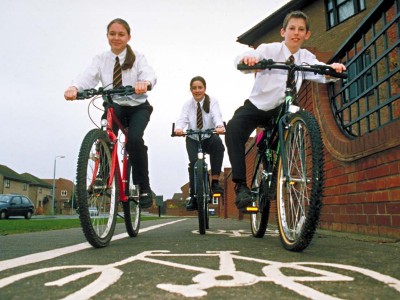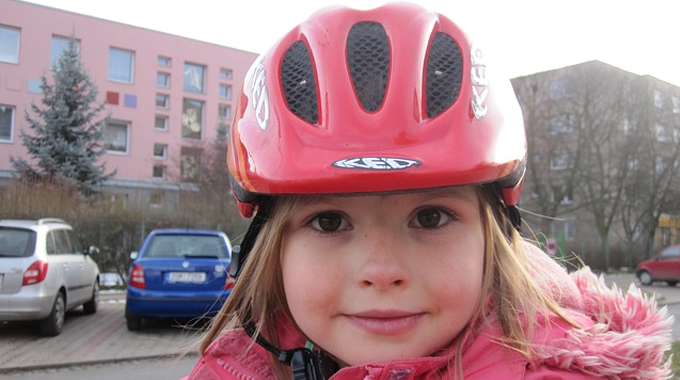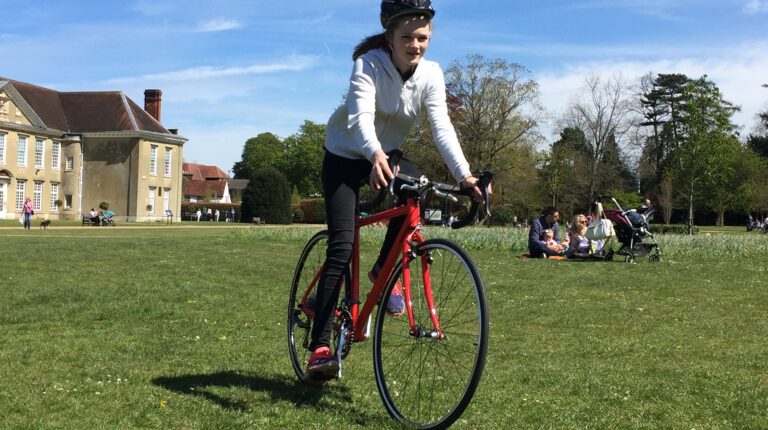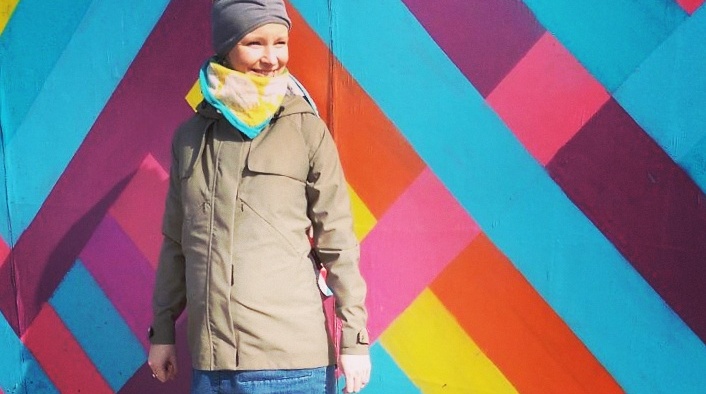Cycling to school is the beginning of becoming a bicycle commuter. Jo Somerset of BikeRight! offers guidance on how to start your children cycling to school and keeping the habit up.

If you cycle yourself, you’ll know the feeling of arriving at work having had a dose of fresh air, time to think, to make that transition between home and work, from sleep to wakefulness, from domestic to the outside world. Even in the rain, it’s never as bad as it seemed once you’re wrapped up in waterproofs.
There’s nothing better for a child’s freedom than giving them the means to travel independently. And secondary school students will agree there’s nothing better than having a few more minutes in bed because it’s often quicker to cycle to school than to walk or get the bus.
If you’ve already been riding to school using a child seat or tagalong bike, the kids grow up assuming that’s the normal way to arrive. My first son travelled to nursery in the child seat on the back of my bike. Our kids then walked to primary school, but the younger ones cycled after we’d overcome the head teacher’s fears and cycle parking was installed.

Things move seamlessly if a parent can commute with their child, drop them off at the school cycle parking and make sure their child’s bike is locked then continue their own journey to work. If it’s not possible to do this every day, once or twice a week is better than nothing.
If there are other children in the family, or the journey to work is unsuitable for cycling, you may have to wait until the last year of primary school. Once they’ve done their Bikeability training, decide with your child if it’s safe for them to ride on their own. Plan the route with them and practice the ride with them until you’re satisfied that they can cope with morning traffic, arrive safely and lock the bike up securely. A combination lock avoids the problem of lost keys.

Primary school children are normally keen on cycling. They will probably do a project on the environment and you’ll have to help to measure the distance of their journey to school, and how many Weetabix it takes to get there. But the cycling habit is often lost in the transition to secondary school. The school is likely to be further away, and as ‘pack mentality’ takes hold, it may not be cool to be seen on a bike. Parental encouragement at this stage is vital.

Children should be able to ride independently to secondary school, as most schools are less than 3-miles from home. If they travel by train or tram, they can ride to the station. In some high schools Level 3 Bikeability training is available for Year 7 children. Building on the Level 2 skills learnt in year 6 at primary school, Level 3 addresses more complex road situations such as busy junctions, traffic lights and roundabouts – the sort of conditions that older children may encounter.
Again, plan and ride the route with your 11-year-old. Many people are only familiar with main roads and bus routes, so make sure you find cycle-friendly back roads where possible. There may be a cycle path or cut-through that makes the journey more enjoyable. Is there anyone else they can ride with? Do any of their friends live nearby who are planning to ride? You need to be confident that your child can ride confidently and competently – and that they will do so conscientiously, taking into account the needs of other road users. They’re old enough now to have a U-lock with a key so make sure they have it as they leave each morning. It’s handy to keep a spare key in a safe place.
Then you need to let them do it.
Without knowing it, your emerging teenager will be doing something that is good for them and good for the planet. But for goodness sake don’t mention it, or they’ll stop instantly. As they won’t want to be seen to be doing something that you approve of or value, it’s best just to chuck a casual remark into conversation, giving them all the credit, like “Well, you’re doing your bit for the environment by cycling.”
What they will notice – and so will you – is the impact on their pocket, which really hits home when they reach the magic age of 16 and start paying full fare on public transport.
As always with older children, you are treading the fine line between encouragement and telling them what to do. As autumn is approaching, make sure they choose a good coat and gloves, and a set of lights as the winter days draw in. It’s their decision to ride; you are providing the things they need in order to do this comfortably over the long term. However, if it’s icy or snowy, you can put your foot down and insist the bike stays at home until the weather improves.

Ultimately, it’s your responsibility to make sure your child’s bike is roadworthy and safe to ride to school each day. If you can instil in your child a sense of pride in their bike, all well and good. You can teach them how to pump up the tyres, and do that all-important M-check every now and then, ensuring that the brakes and moving parts are all functioning well. But if it all seems too much of a chore for them, parental dogsbody will have to do all this.
Whichever way it works in your house, please teach your sons and daughters how to fix a puncture. It really is not that difficult, but is one of the biggest barriers to ongoing cycling. Bikes languish for weeks in the hall with a flat tyre, instead of being dealt with promptly and matter-of-factly. Many mums need to increase their own confidence at puncture repair, and book in to a cycle maintenance session with BikeRight! or another local provider. If there’s none available in your area, go to the ‘How to repair and inner tube’ tutorial.
As the children grow up, their awareness also develops. We found that having an ongoing conversation about cycling helped our children to balance their increased capacity for taking responsibility with the sometimes tempting descent towards being more reckless. It’s scary as a parent to hear your child say “The car just came out of nowhere,” but at least they are telling you, and you have a chance to talk through – again – how they make judgements as a road user.
The ultimate aim is that everyone in the family uses their bike without thinking about it, taking for granted that cycling is the normal way to get to school, work and college.





